Cats have long been part of the lives and imaginations of humans. Egyptians worshiped the cat goddess Bastet, Persians feared these animals as potentially evil, Chinese aristocrats prized them for their rarity, American Puritans associated them with witchcraft, while the French appreciated them for their hunting skills.[1] Throughout human history, cats have played a dual role as being both good and evil. This duality is well represented in Don Bluth’s animated film An American Tail (1986), in which cats and mice co-habit.
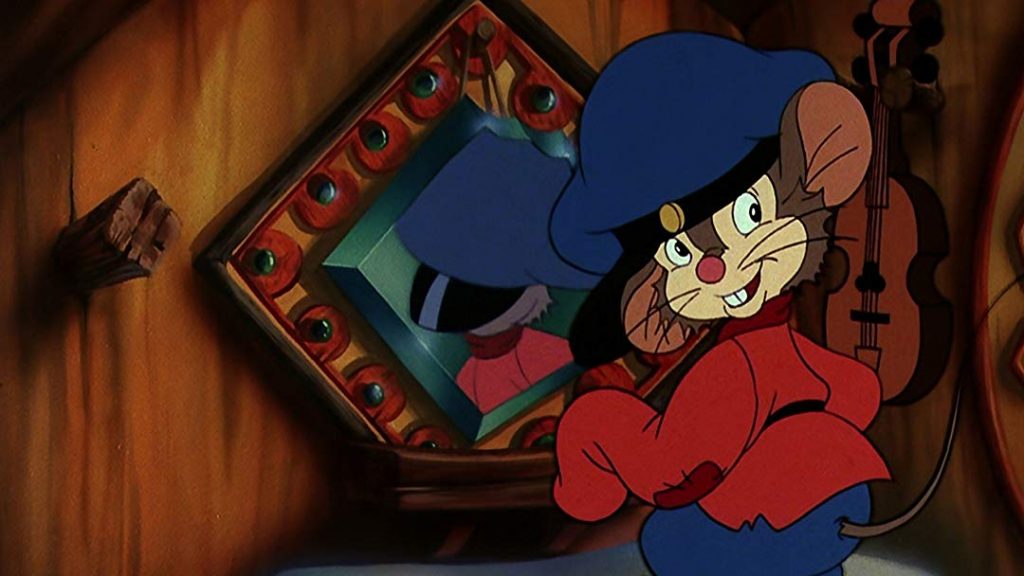
The film tells the story of Fievel Mousekewitz, whose family emigrates to the United States after cats dressed as Cossacks destroy their house. During the trip, a violent storm throws Fievel overboard and his family believes him to be dead. Nevertheless, he manages to arrive safely in New York and makes friends that will help him look for his family. While searching for his loved ones, Fievel leads a plan against the New York cat gang, the Mott Street Maulers, who terrorize the helpless mice.
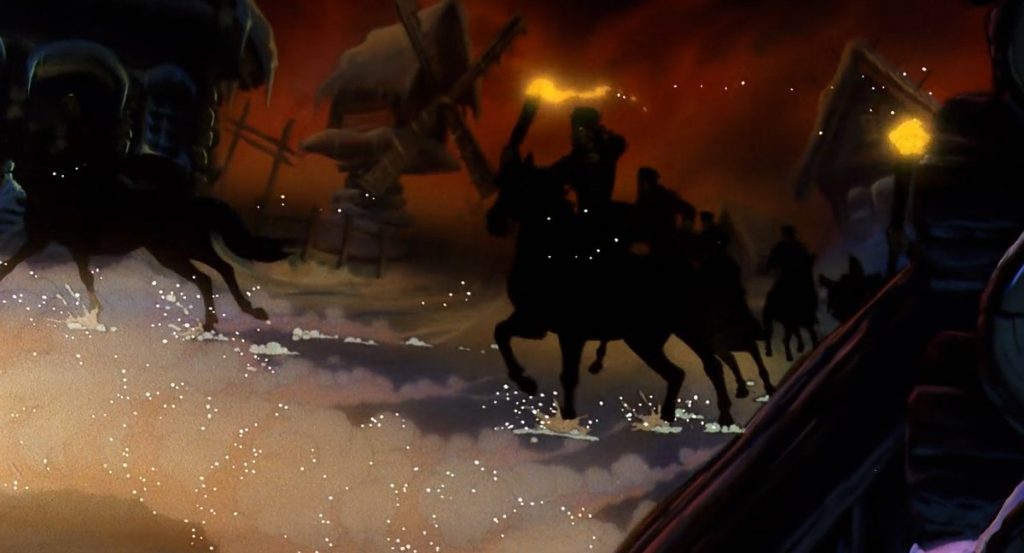
In the film, cats play the role of the persecutors and they represent persecution as a whole. In contrast, mice are pictured as the persecuted. For example, it is narrated that Papa Mousekewitz, a Russian Jew, lost his father in a cat attack. However, he never specifies if the cats in question were Cossacks or not. He and his family later leave their home, Shostka, after the cats-Cossacks attack them, destroy all their houses, and burning their village.[2] The cats’ pogrom against the Jewish mice is paralleled in the film by a human attack on the local Russian Jewish community of Shostka, making the cats and mice existence, a general allegory for human existence.
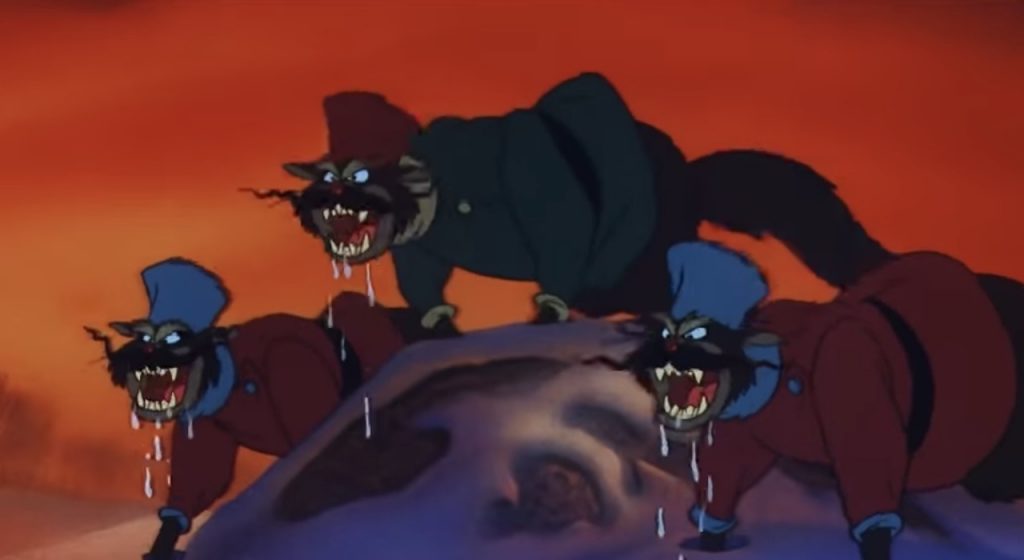
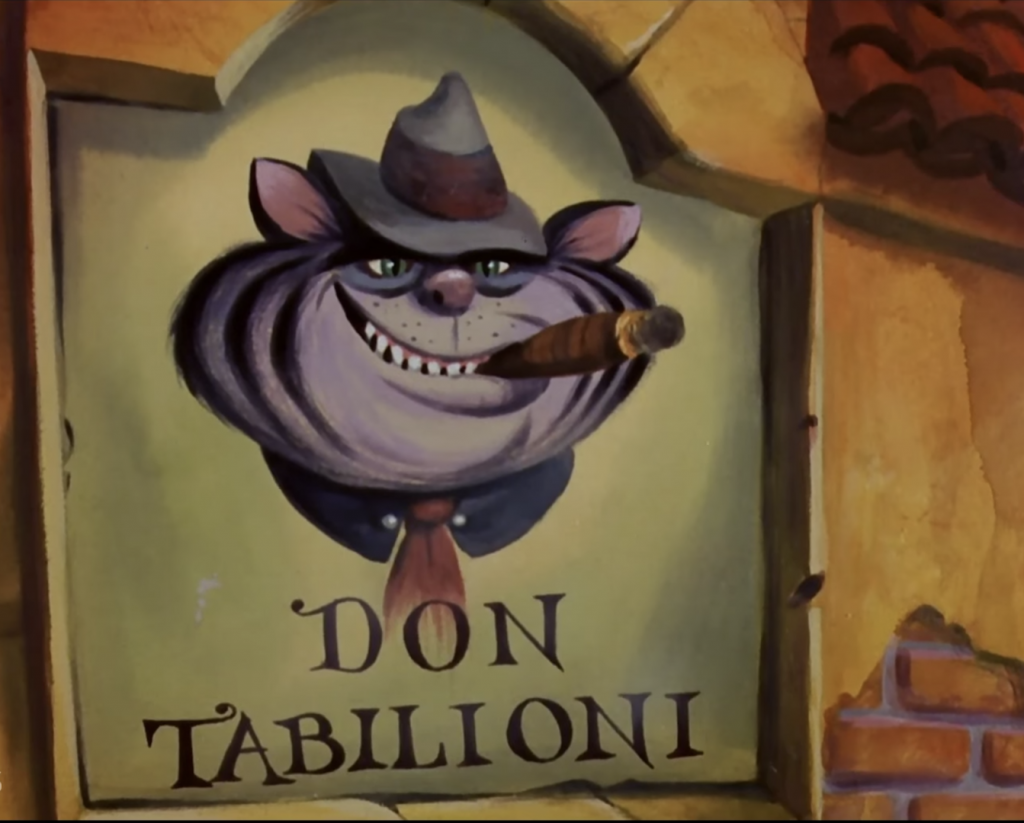
During the Mousekewitz’s trip abroad, they encounter an Italian immigrant who has also lost a member of his family because of a cat: his ‘mamma mia’. One finds out that a feline Don (presumably from the mafia) murdered his mother as she tried to defend one of her sons. It seems that her body was never found. Finally, during the same trip, a young Irish mouse comes forward mourning the death of his girlfriend. A cat attacked them and swallowed his beloved one, leaving only her tail for him to bury. In the three examples above, the persecuted and the persecutors are obvious. For the Russian Jewish Mousekewitz family, cats represent discrimination. For the Italian mouse, the feline stands for corruption. Finally, for the Irish mouse, they represent murderers. As the rodents decide to leave Europe and their persecutors, they express their hope towards the promised cat-free land (i.e., America) singing that ‘there are no cats in America and the streets are paved with cheese’ (i.e., there is no oppression in America).
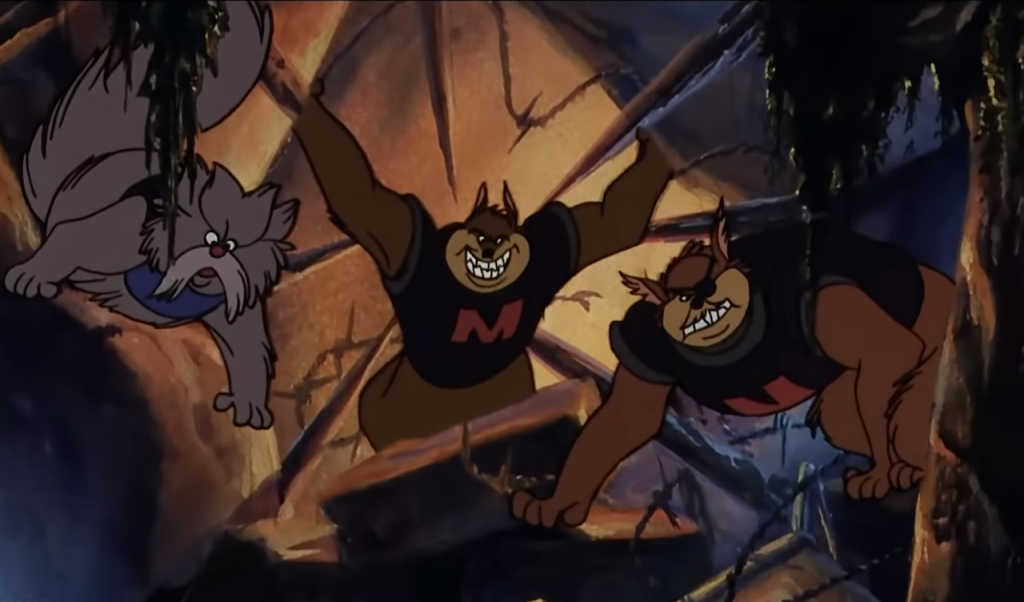
In the film, cats’ role as the oppressors is also supported by how they are drawn. All the cats depicted have an incredible set of large and sharp teeth, thick and pronounced eyebrows that make them look villainous, and sharp claws. The impressive amount of saliva coming out of their mouths depicts them as wild beasts. They all have neutral or dark colors that contrast sharply with their pale teeth and eyes. In addition, when they attack, they make a strong growl, clearly emphasizing their role as aggressors.
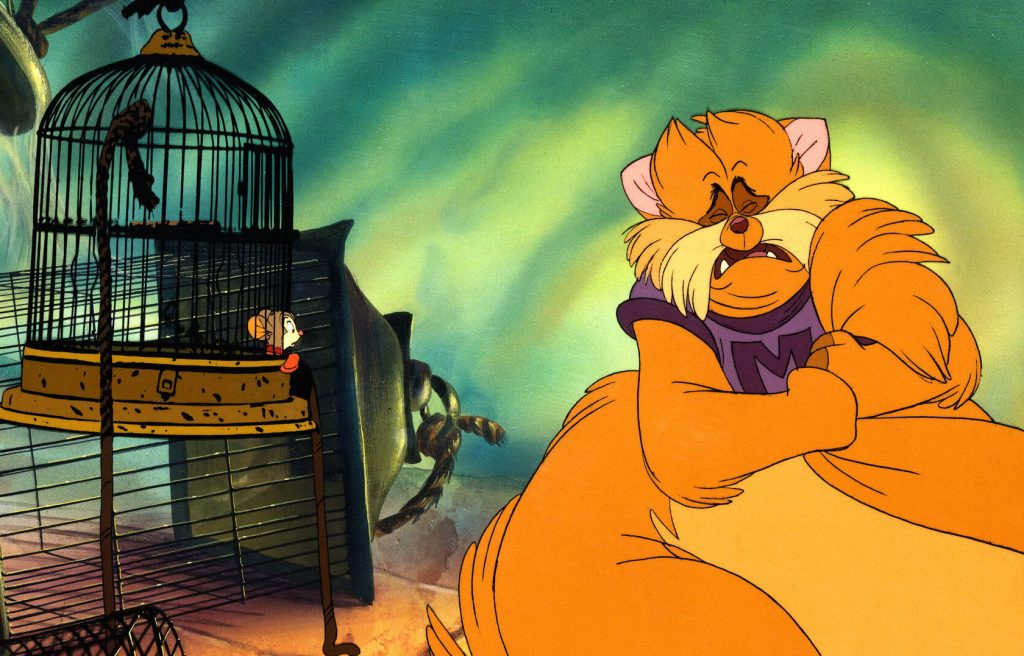
Although Bluth depicts cats as bad characters, there is one exception: Tiger. This cat is a member of the Mott Street Maulers, who later befriends Fievel. He is an overweighted goofy cat with a big duster-like tail. Although he is bigger and taller than most of the other cats in the film, his clumsiness makes him more likable than the others. His softer lines and flamboyant yellow color create a strong contrast with the other cats. In addition, Tiger does not have sharp claws like the other ones because he bites them, a fact that makes him less threatening. He is also a vegetarian, which is why he becomes friends with the mouse at the end of the movie. Tiger basically looks like the sweet overweighted kitty that your granny owns, thus representing the perfect example of domesticity.
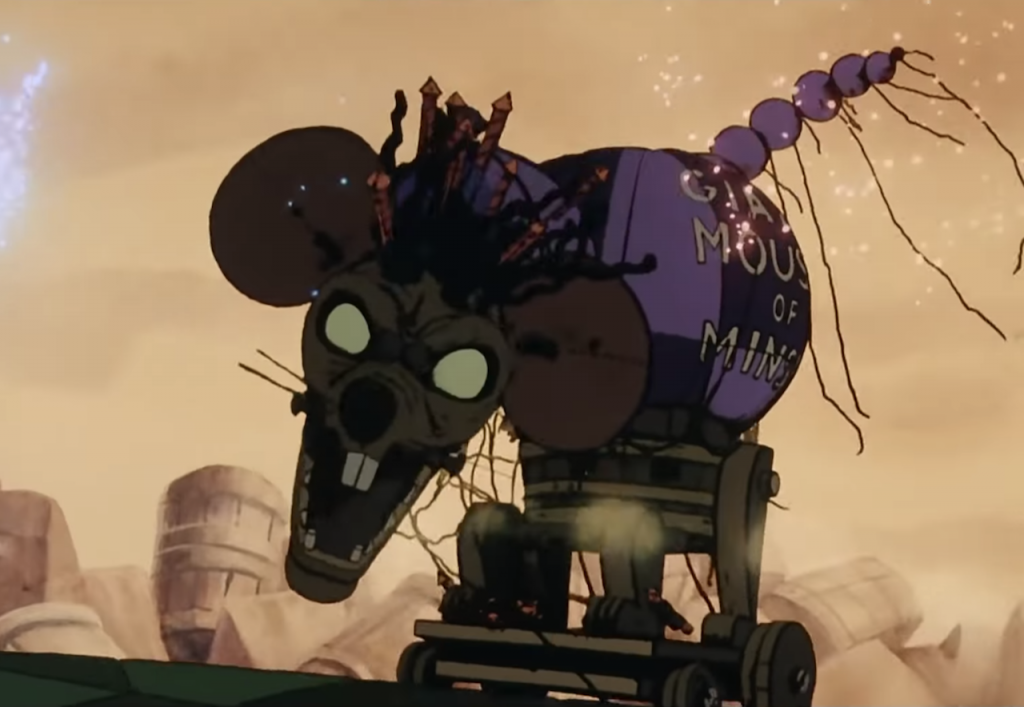
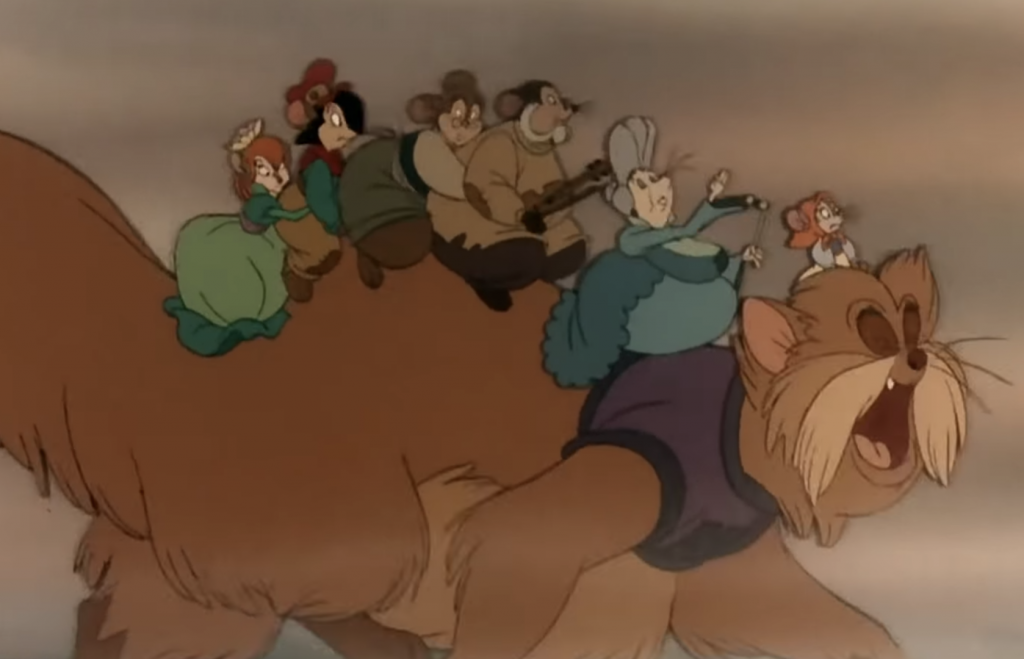
This aspect of the character is interesting because it guarantees him safety in America. Towards the end of the movie, the mice unite and build the Giant Mouse of Minsk, a gigantic mechanical mouse. Like in horror movies, the cat toy usually found in houses suddenly looks threatening to the straight cats. The mechanical mouse attacks the cats until they board a boat to Hong Kong. Tiger is the only feline left on land, one presumes because he is tamed. In addition, Tiger’s domesticity guarantees him friends (the mice) and later in the film sequel, a relationship with the other sex – as seen in his rocky relationship with cabaret singer Miss Kitty.[3]
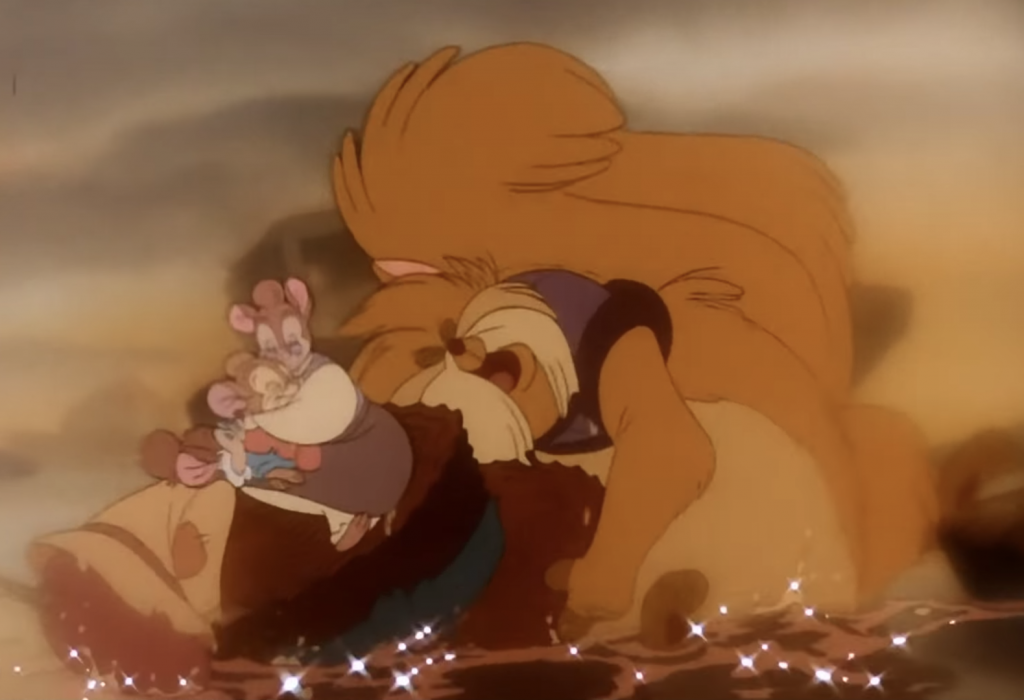
As the story ends, the mice sing that ‘there are no more cats in America’, except for Tiger who proved that cats are acceptable to the New World, as long as they are domesticated and present no threat to anyone. The last sequence shows an image of the Statue of Liberty winking at Fievel and his sister, supporting once more the idea, or perhaps the dream, of a persecution-free land.
Acknowledgments
I am grateful to Boris, Juliette, Diesel, Salem, and Emperor Maximilian I for inspiring this post. Based on the suspicious dead bodies and body parts of different species found in the neighborhood, I can confirm they are living the double life of persecutors, bullies, and sadistic murderers. I feel sorry for the oppressed.
Genia Boivin completed her Ph.D. in Modern Languages and Cultural Studies at the University of Alberta, Canada. Her research focuses on the representation of national culture and the use of politics in animated films made in Soviet Russia, Ukraine, and Russian émigré France. Genia is a lecturer at the University of Sudbury in the department of long-distance education. An American Tail was one of her childhood favourites. She has 5 cats.
[1] Rogers, Katharine M., Cat (London: Reaktion Books, 2006): 7-24; Roach, Marilynne K., The Salem Witch Trials: A Day-by-day Chronicle of a Community Under Siege (Lanham, New York, Dallas, Boulder, Toronto, Oxford: Taylor Trade Publishing, 2002).
[2] Interestingly, in 1885 – the year in which the Mousekewitz were attacked – Shostka was part of the Chernihiv province. This region was part of the Pale of settlement created under Catherine the Great where Jewish settlements were restricted until the Russian Revolution of 1917. See Potichnyj, Peter, “Pale of Settlement,” Internet Encyclopedia of Ukraine, vol. 3, 1993, http://www.encyclopediaofukraine.com/display.asp?linkpath=pages%5CP%5CA%5CPaleofSettlement.htm (Accessed October 2019); Trumbore, Dave, “‘An American Tale’: Modern Lessons on Racism, Immigration, and Human Decency,” in The Collider, November 21, 2016. https://collider.com/an-american-tail-30th-anniversary-themes-racism-immigration/#immigrants-refugees (Accessed October 2019).
[3] One should note that in An American Tail, the cat-persecutors are exclusively male. Female cats are completely absent from the film.

3D, Vfx animation services